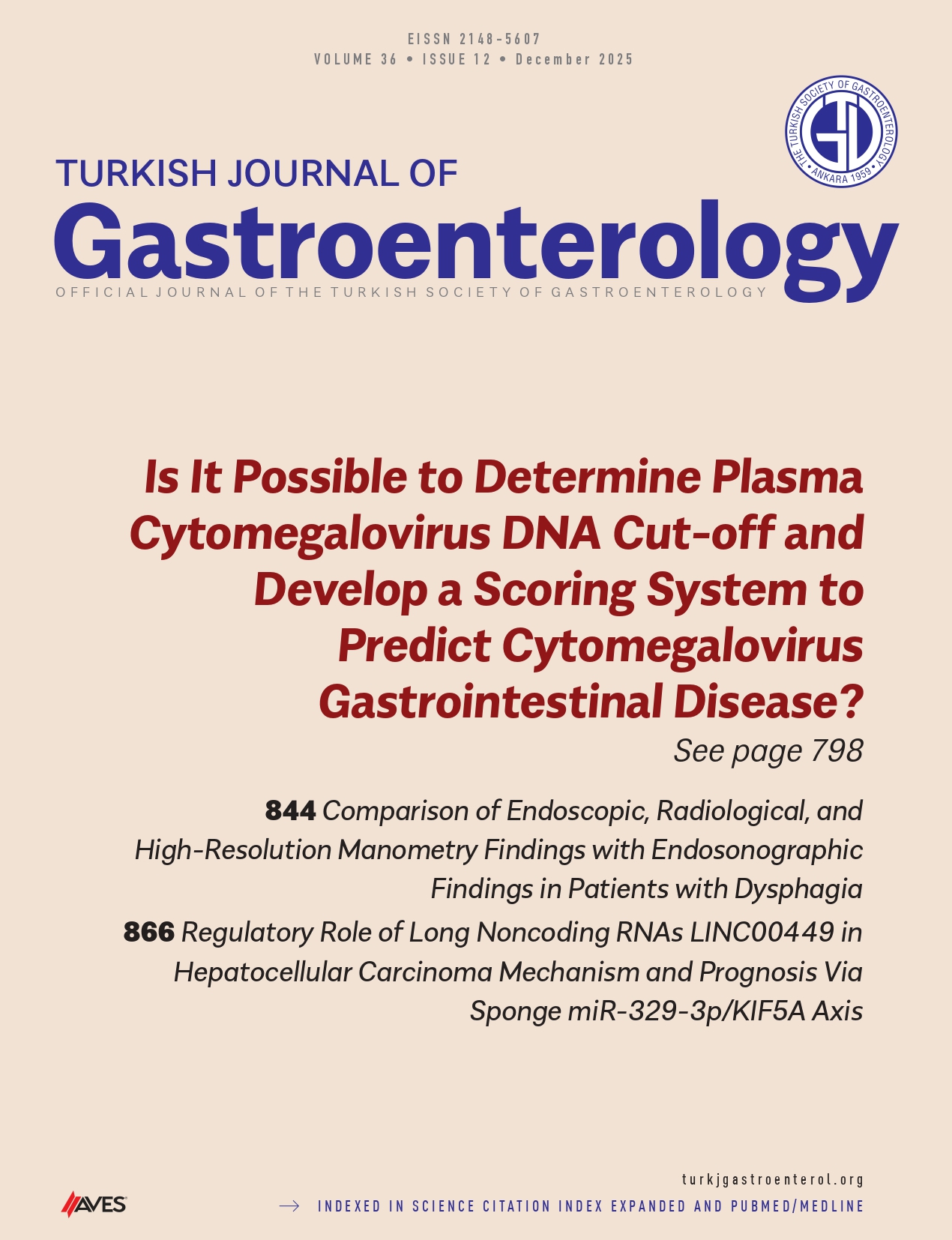Background: Non-invasive methods play an important role in clinical assessment of Crohn’s disease. Recent studies have highlighted the effectiveness and reliability of intestinal ultrasonography. We aimed to examine the relationship between intestinal ultrasonography and the clinical, endoscopic, and computed tomography enterography findings, and to assess the activity of Crohn’s disease.
Methods: This was a 1-year prospective study involving patients diagnosed with Crohn’s Disease. Clinical and endoscopic activity indi- ces, and intestinal ultrasonography and computed tomography enterography findings were evaluated. Intestinal wall thickness, mes- enteric inflammation, lymphadenopathy, and complications were evaluated by intestinal ultrasonograpy and computed tomography enterography, while the superior mesenteric artery flow velocity, resistive index, and Limberg score were assessed by Doppler intestinal ultrasonography.
Results: Seventy-nine patients with Crohn’s disease were included. A significant correlation was found between intestinal wall thick- ness, mesenteric inflammation, and complications in intestinal ultrasonography and computed tomography enterography (P = .0001). According to the receiver operating curve analysis, the intestinal wall thickness, and mesenteric inflammation were correlated with the Crohn’s Disease Activity Index, Harvey–Bradshaw Index, and SES-CD scores (P ˂ .05), and they were very effective in distinguishing active from inactive disease. According to the Crohn’s Disease Activity Index and SES-CD scores, Doppler flow velocity of the superior mesenteric artery was significantly higher in the active group than in the inactive group (P ˂ .05). The Limberg score was very consistent with the Crohn’s Disease Activity Index, Harvey–Bradshaw Index , and the results of the Simple Endoscopic Score for Crohn’s Disease (P < .0001).
Conclusion: Our study showed that intestinal ultrasonography is an effective and reliable method for assessment of Crohn’s disease activity compared to clinical, endoscopic, and CTE findings.
Cite this article as: Yiğit B, Sezgin O, Yorulmaz E, et al. Effectiveness and power of abdominal ultrasonography in the assessment of Crohn’s disease activity: Comparison with clinical, endoscopic, and CT enterography findings. Turk J Gastroenterol. 2022;33(4):294-303.




.png)
.png)